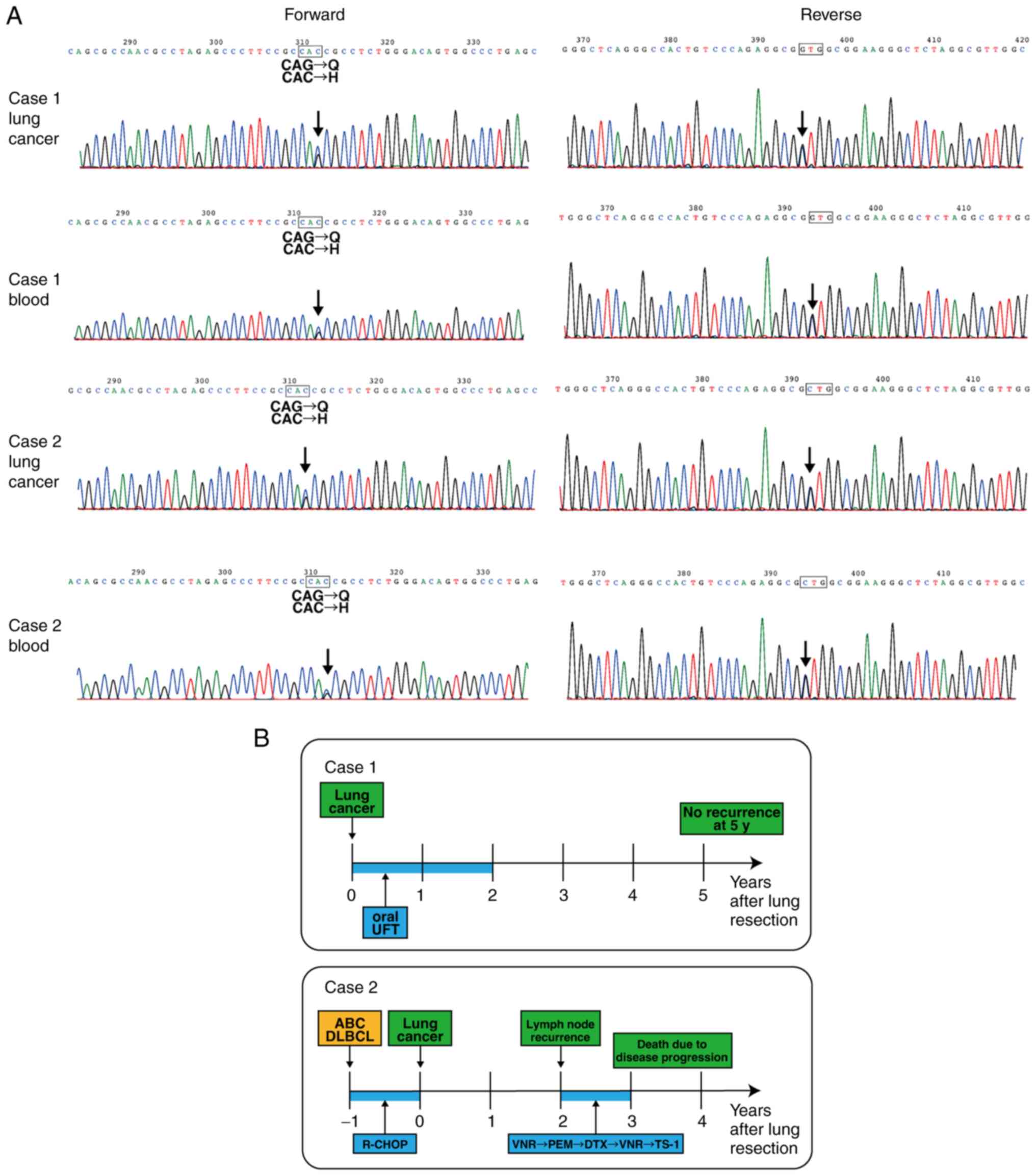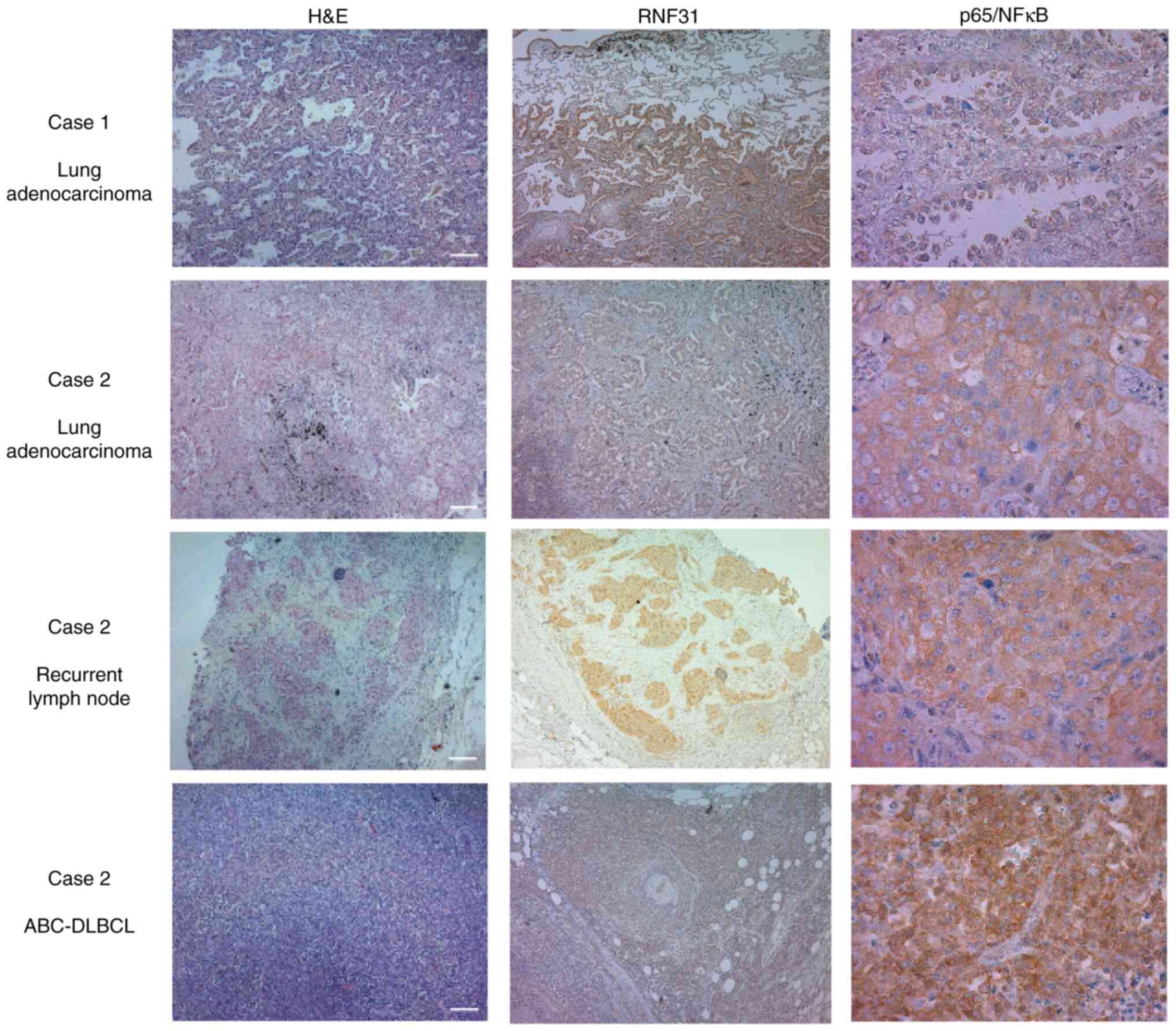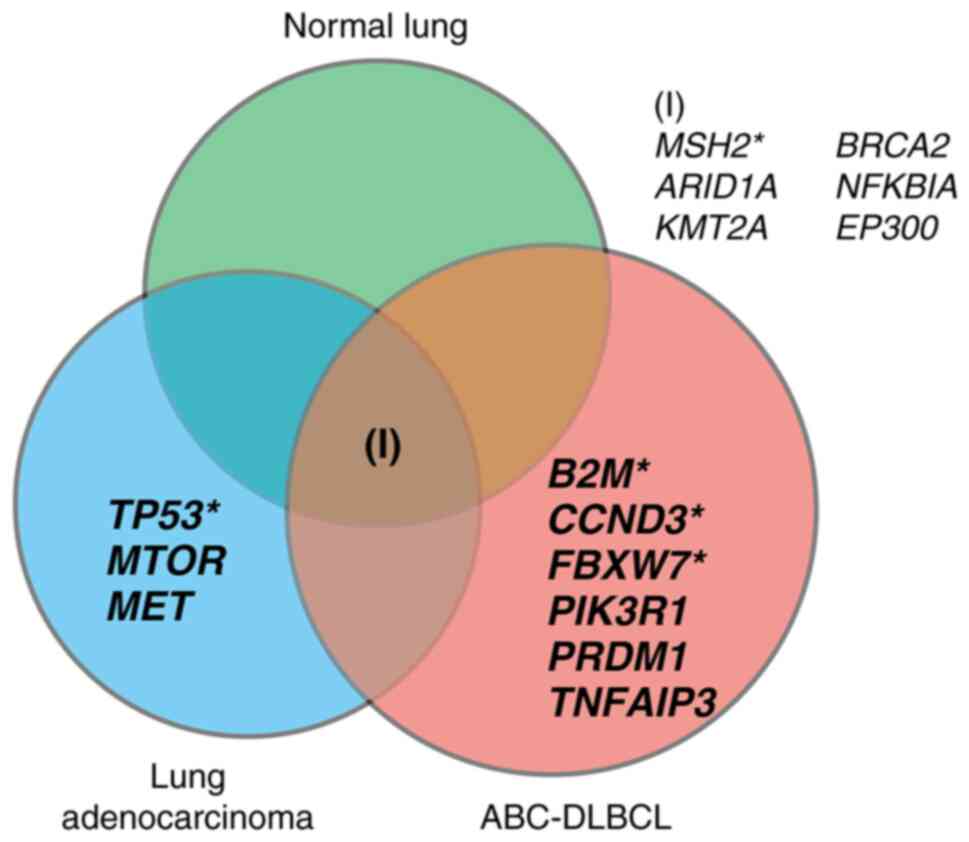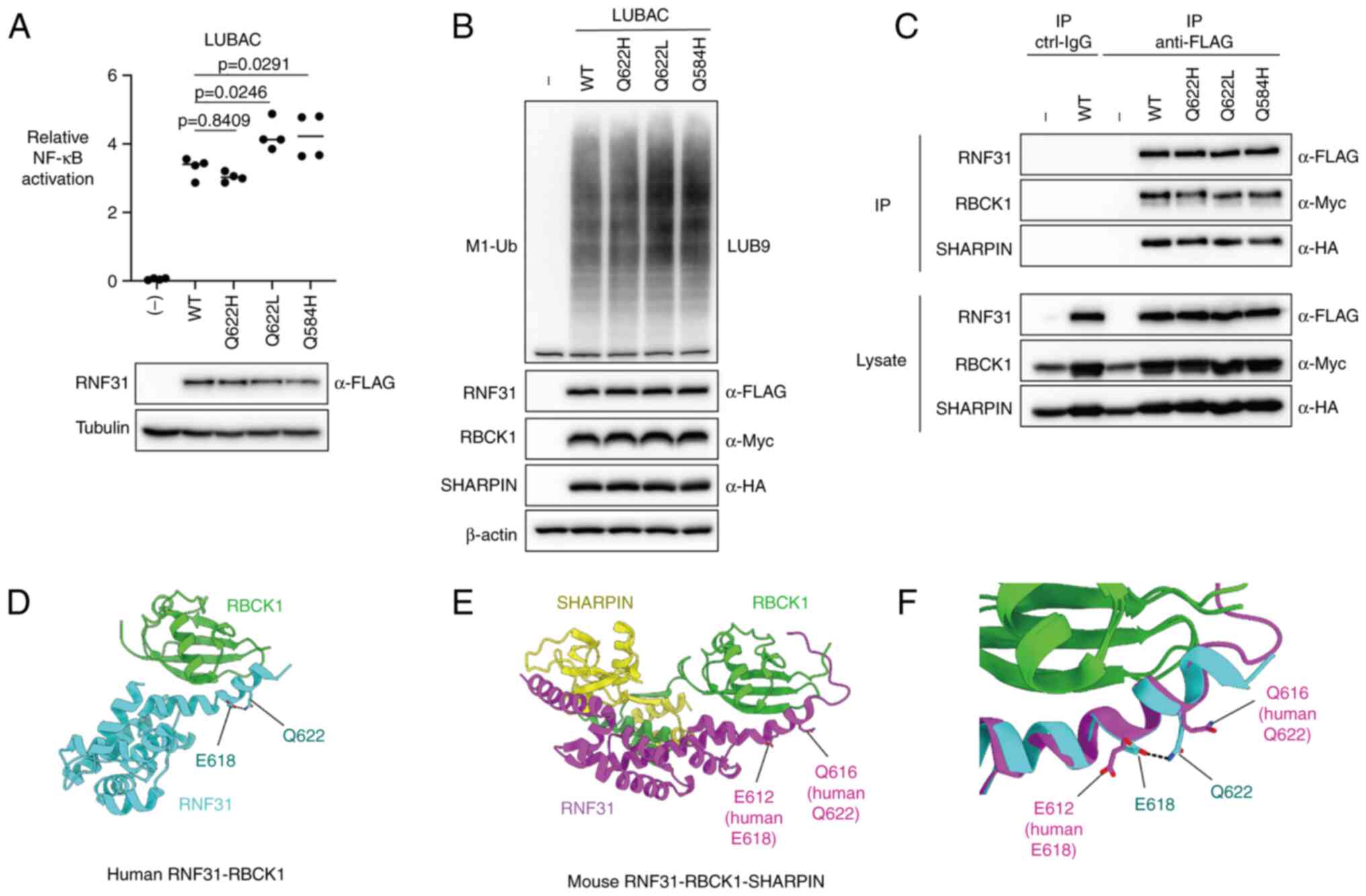|
1
|
Yau R and Rape M: The increasing
complexity of the ubiquitin code. Nat Cell Biol. 18:579–586. 2016.
View Article : Google Scholar : PubMed/NCBI
|
|
2
|
Swatek KN and Komander D: Ubiquitin
modifications. Cell Res. 26:399–422. 2016. View Article : Google Scholar : PubMed/NCBI
|
|
3
|
Grumati P and Dikic I: Ubiquitin signaling
and autophagy. J Biol Chem. 293:5404–5413. 2018. View Article : Google Scholar : PubMed/NCBI
|
|
4
|
Popovic D, Vucic D and Dikic I:
Ubiquitination in disease pathogenesis and treatment. Nat Med.
20:1242–1253. 2014. View
Article : Google Scholar : PubMed/NCBI
|
|
5
|
Sasaki Y, Sano S, Nakahara M, Murata S,
Kometani K, Aiba Y, Sakamoto S, Watanabe Y, Tanaka K, Kurosaki T
and Iwai K: Defective immune responses in mice lacking
LUBAC-mediated linear ubiquitination in B cells. EMBO J.
32:2463–2476. 2013. View Article : Google Scholar : PubMed/NCBI
|
|
6
|
Teh CE, Lalaoui N, Jain R, Policheni AN,
Heinlein M, Alvarez-Diaz S, Sheridan JM, Rieser E, Deuser S,
Darding M, et al: Linear ubiquitin chain assembly complex
coordinates late thymic T-cell differentiation and regulatory
T-cell homeostasis. Nat Commun. 7:133532016. View Article : Google Scholar : PubMed/NCBI
|
|
7
|
Redecke V, Chaturvedi V, Kuriakose J and
Häcker H: SHARPIN controls the development of regulatory T cells.
Immunology. 148:216–226. 2016. View Article : Google Scholar : PubMed/NCBI
|
|
8
|
Klein T, Fung SY, Renner F, Blank MA,
Dufour A, Kang S, Bolger-Munro M, Scurll JM, Priatel JJ, Schweigler
P, et al: The paracaspase MALT1 cleaves HOIL1 reducing linear
ubiquitination by LUBAC to dampen lymphocyte NF-κB signalling. Nat
Commun. 6:87772015. View Article : Google Scholar : PubMed/NCBI
|
|
9
|
Song Z, Wei W, Xiao W, Al-Saleem ED,
Nejati R, Chen L, Yin J, Fabrizio J, Petrus MN, Waldmann TA and
Yang Y: Essential role of the linear ubiquitin chain assembly
complex and TAK1 kinase in A20 mutant Hodgkin lymphoma. Proc Natl
Acad Sci USA. 117:28980–28991. 2020. View Article : Google Scholar : PubMed/NCBI
|
|
10
|
Yang Y, Schmitz R, Mitala J, Whiting A,
Xiao W, Ceribelli M, Wright GW, Zhao H, Yang Y, Xu W, et al:
Essential role of the linear ubiquitin chain assembly complex in
lymphoma revealed by rare germline polymorphisms. Cancer Discov.
4:480–493. 2014. View Article : Google Scholar : PubMed/NCBI
|
|
11
|
Dubois SM, Alexia C, Wu Y, Leclair HM,
Leveau C, Schol E, Fest T, Tarte K, Chen ZJ, Gavard J and Bidère N:
A catalytic-independent role for the LUBAC in NF-κB activation upon
antigen receptor engagement and in lymphoma cells. Blood.
123:2199–2203. 2014. View Article : Google Scholar : PubMed/NCBI
|
|
12
|
Jo T, Nishikori M, Kogure Y, Arima H,
Sasaki K, Sasaki Y, Nakagawa T, Iwai F, Momose S, Shiraishi A, et
al: LUBAC accelerates B-cell lymphomagenesis by conferring
resistance to genotoxic stress on B cells. Blood. 136:684–697.
2020. View Article : Google Scholar : PubMed/NCBI
|
|
13
|
Yokobori T, Bao P, Fukuchi M, Altan B,
Ozawa D, Rokudai S, Bai T, Kumakura Y, Honjo H, Hara K, et al:
Nuclear PROX1 is associated with hypoxia-inducible factor 1α
expression and cancer progression in esophageal squamous cell
carcinoma. Ann Surg Oncol. 22 (Suppl 3):S1566–S1573. 2015.
View Article : Google Scholar : PubMed/NCBI
|
|
14
|
Sasaki A, Hirato J, Hirose T, Fukuoka K,
Kanemura Y, Hashimoto N, Kodama Y, Ichimura K, Sakamoto H and
Nishikawa R: Review of ependymomas: Assessment of consensus in
pathological diagnosis and correlations with genetic profiles and
outcome. Brain Tumor Pathol. 36:92–101. 2019. View Article : Google Scholar : PubMed/NCBI
|
|
15
|
Tate JG, Bamford S, Jubb HC, Sondka Z,
Beare DM, Bindal N, Boutselakis H, Cole CG, Creatore C, Dawson E,
et al: COSMIC: The catalogue of somatic mutations in cancer.
Nucleic Acids Res. 47(D1): D941–D947. 2019. View Article : Google Scholar : PubMed/NCBI
|
|
16
|
Tokunaga F, Nakagawa T, Nakahara M, Saeki
Y, Taniguchi M, Sakata S, Tanaka K, Nakano H and Iwai K: SHARPIN is
a component of the NF-κB-activating linear ubiquitin chain assembly
complex. Nature. 471:633–636. 2011. View Article : Google Scholar : PubMed/NCBI
|
|
17
|
Tokunaga F, Sakata SI, Saeki Y, Satomi Y,
Kirisako T, Kamei K, Nakagawa T, Kato M, Murata S, Yamaoka S, et
al: Involvement of linear polyubiquitylation of NEMO in NF-kappaB
activation. Nat Cell Biol. 11:123–132. 2009. View Article : Google Scholar : PubMed/NCBI
|
|
18
|
Fujita H, Tokunaga A, Shimizu S, Whiting
AL, Aguilar-Alonso F, Takagi K, Walinda E, Sasaki Y, Shimokawa T,
Mizushima T, et al: Cooperative domain formation by homologous
motifs in HOIL-1L and SHARPIN plays A crucial role in LUBAC
stabilization. Cell Rep. 23:1192–1204. 2018. View Article : Google Scholar : PubMed/NCBI
|
|
19
|
Yagi H, Ishimoto K, Hiromoto T, Fujita H,
Mizushima T, Uekusa Y, Yagi-Utsumi M, Kurimoto E, Noda M, Uchiyama
S, et al: A non-canonical UBA-UBL interaction forms the
linear-ubiquitin-chain assembly complex. EMBO Rep. 13:462–468.
2012. View Article : Google Scholar : PubMed/NCBI
|
|
20
|
Karin M: NF-kappaB as a critical link
between inflammation and cancer. Cold Spring Harb Perspect Biol.
1:a0001412009. View Article : Google Scholar : PubMed/NCBI
|
|
21
|
Boisson B, Laplantine E, Dobbs K, Cobat A,
Tarantino N, Hazen M, Lidov HG, Hopkins G, Du L, Belkadi A, et al:
Human HOIP and LUBAC deficiency underlies autoinflammation,
immunodeficiency, amylopectinosis, and lymphangiectasia. J Exp Med.
212:939–951. 2015. View Article : Google Scholar : PubMed/NCBI
|
|
22
|
Boisson B, Laplantine E, Prando C, Giliani
S, Israelsson E, Xu Z, Abhyankar A, Israël L, Trevejo-Nunez G,
Bogunovic D, et al: Immunodeficiency, autoinflammation and
amylopectinosis in humans with inherited HOIL-1 and LUBAC
deficiency. Nat Immunol. 13:1178–1186. 2012. View Article : Google Scholar : PubMed/NCBI
|
|
23
|
Nilsson J, Schoser B, Laforet P, Kalev O,
Lindberg C, Romero NB, Dávila López M, Akman HO, Wahbi K, Iglseder
S, et al: Polyglucosan body myopathy caused by defective ubiquitin
ligase RBCK1. Ann Neurol. 74:914–919. 2013. View Article : Google Scholar : PubMed/NCBI
|
|
24
|
Oda H, Beck DB, Kuehn HS, Sampaio Moura N,
Hoffmann P, Ibarra M, Stoddard J, Tsai WL, Gutierrez-Cruz G, Gadina
M, et al: Second case of HOIP deficiency expands clinical features
and defines inflammatory transcriptome regulated by LUBAC. Front
Immunol. 10:4792019. View Article : Google Scholar : PubMed/NCBI
|
|
25
|
Shimizu Y, Peltzer N, Sevko A, Lafont E,
Sarr A, Draberova H and Walczak H: The linear ubiquitin chain
assembly complex acts as a liver tumor suppressor and inhibits
hepatocyte apoptosis and hepatitis. Hepatology. 65:1963–1978. 2017.
View Article : Google Scholar : PubMed/NCBI
|
|
26
|
Pomerantz JL: HOIP for targeting diffuse
large B-cell lymphoma. Blood. 136:646–647. 2020. View Article : Google Scholar : PubMed/NCBI
|
|
27
|
Awad MM, Oxnard GR, Jackman DM, Savukoski
DO, Hall D, Shivdasani P, Heng JC, Dahlberg SE, Jänne PA, Verma S,
et al: MET exon 14 mutations in non-small-cell lung cancer are
associated with advanced age and stage-dependent MET genomic
amplification and c-Met overexpression. J Clin Oncol. 34:721–730.
2016. View Article : Google Scholar : PubMed/NCBI
|
|
28
|
Frampton GM, Ali SM, Rosenzweig M,
Chmielecki J, Lu X, Bauer TM, Akimov M, Bufill JA, Lee C, Jentz D,
et al: Activation of MET via diverse exon 14 splicing alterations
occurs in multiple tumor types and confers clinical sensitivity to
MET inhibitors. Cancer Discov. 5:850–859. 2015. View Article : Google Scholar : PubMed/NCBI
|


















